Today we introduce to you Multilingual Associations – New Feature in Joomla 3.7. This feature will allow you to edit all your translations in a single interface.(Previously, you had to do it individually, because there was no place to manage all of your translation items). Check this post to know more info!
We assume that your website has more than one language installed.
Step 1. Enable the Item Associations
First, you go to Extensions > Plugins. Then search for the plugin with name is “System – Language Filter” and open it.
Now, let’s set the plugin’s Status to “Enabled” and Item Associations to “Yes“. And save it.
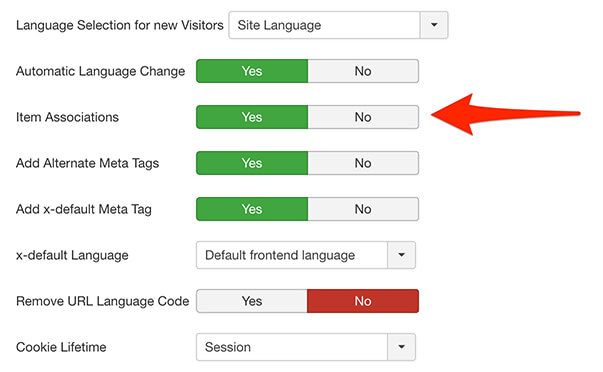
Step 2. Create a translation for an article
To create a translation for an article, follow this guide:
Go to Content > Articles, then you edit the article. You’ll see “Associations” tab, listing the current languages supported by your site.
Want to create a new article in another language, click on the “Create” button.
Here we translate the article into Spanish.

Next, add title and content for the translation. Save it.

And Click on the “Save & Close” to save the association.
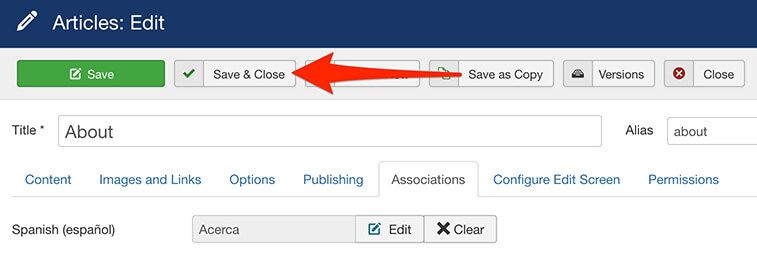
Step 3. Use the Multilingual Associations component
Let’s see how the new Multilingual Associations works.
The first thing you need to do is to go to Components > Multilingual Associations.
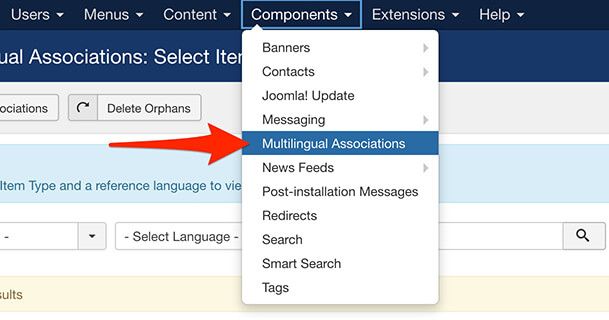
Now, you will see an overview of all the translations on your site and several search options. You can filter by component, for example: article. By language. for example: English.

Click on one of the translation items. In this example, it just load the article edit form for the English version. If you want to include another language edit version too, edit both versions at the same time.
Click Select target language, for example: “Spanish”.
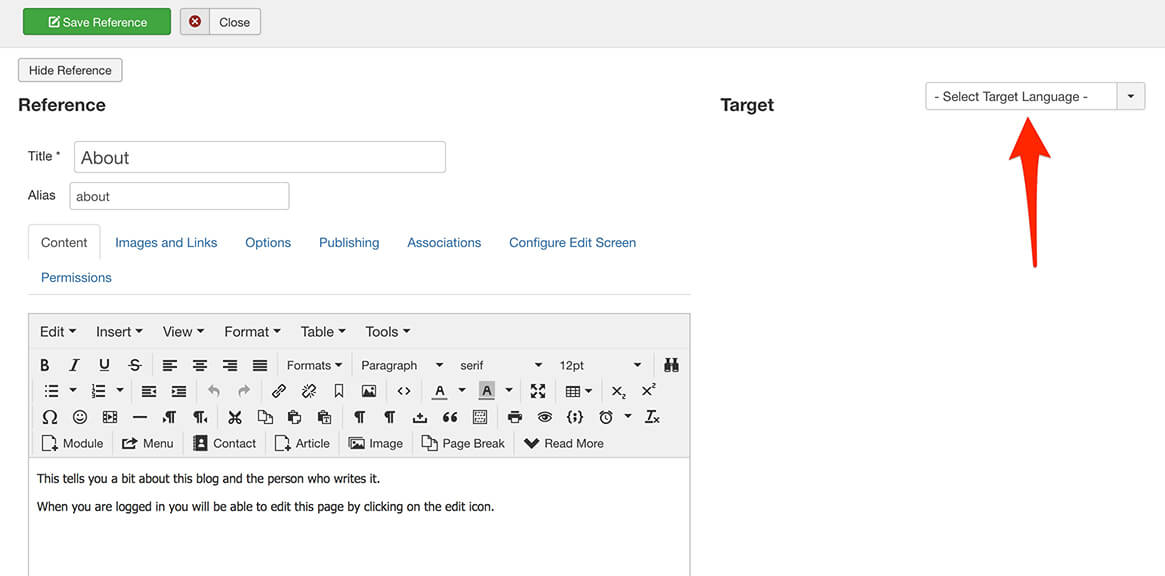
Now you will see both Spanish article and English version.
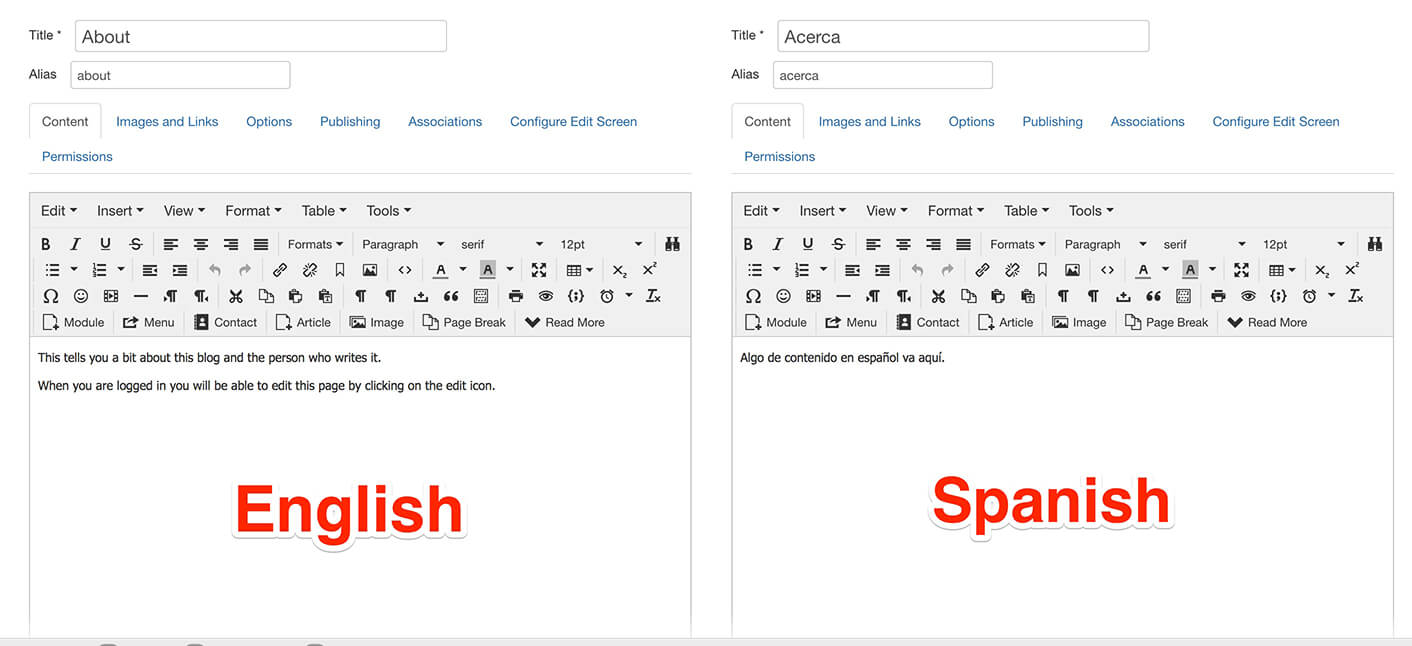
Now you can edit the articles according to your requirements. There are two save button to save changes.
Use the “Save reference” button to save the original article (in this example, it’s the English version).
And use the “Save target” button to save the article loaded from the previous step ( it will be the Spanish version in this example).
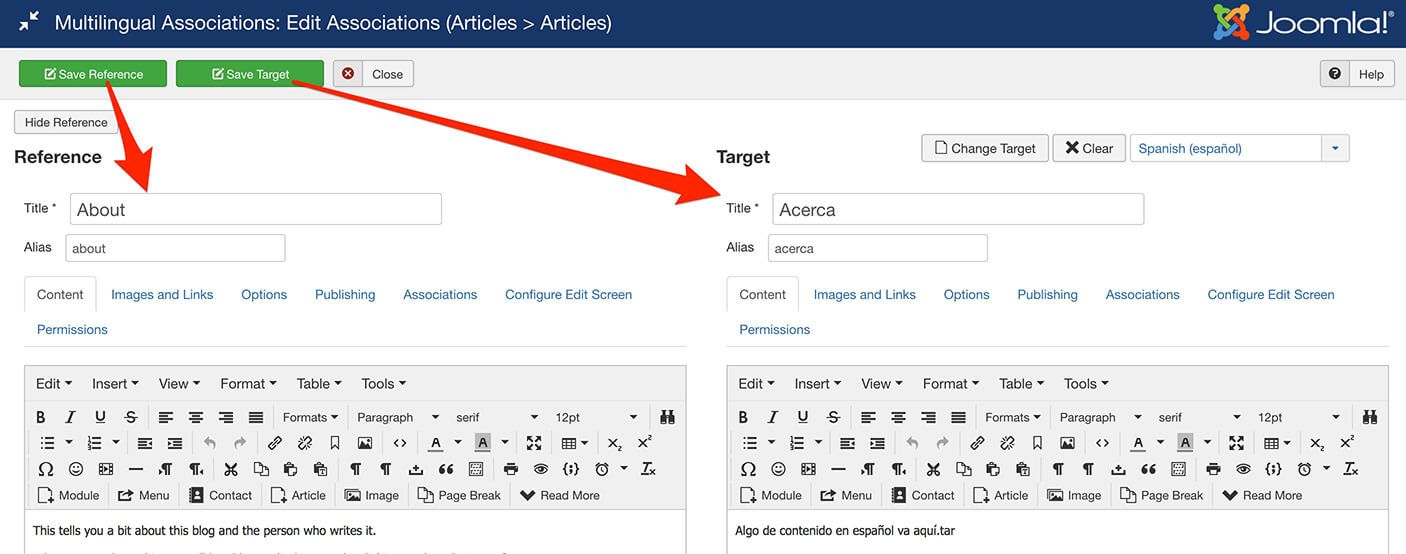
That’s all!
If you have any question about this post, don’t hesitate to leave a comment below. And don’t forget to share with your friends if you find it useful! Thanks!
- Resolving the “Class JFactory Not Found” Error in Joomla When Upgrading to J6 - December 19, 2025
- The Utility Of VPNs For Site Authors And Admins - November 24, 2025
- Joomla! 6: What’s New and How to Upgrade from Joomla! 5 - October 23, 2025

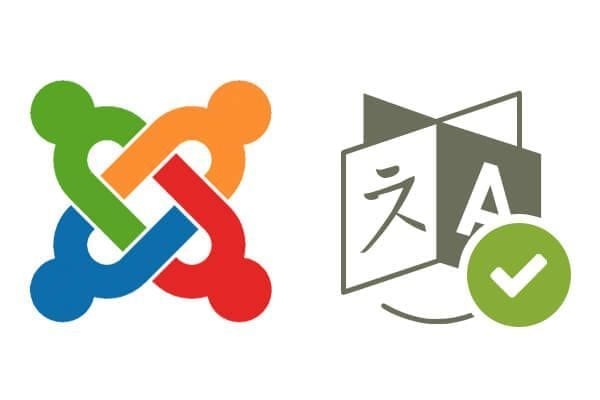

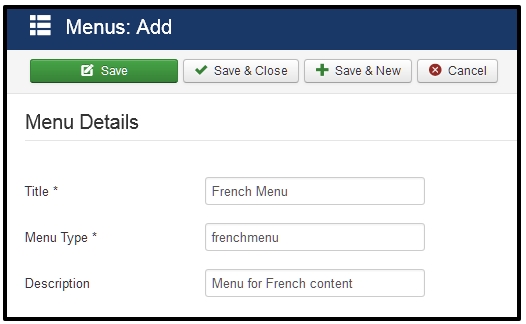






Recent Comments